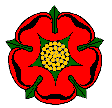 |
St Stephen and All Martyrs, Darcy Lever |
 |
From The Bolton Journal and Guardian, 1936, reproduced here by the kind permission of the Bolton News.
The fairest jewel can be deprived of beauty in a poor and unworthy setting. In such a setting now is St. Stephen and All Martyrs’ Church, Lever Bridge.
Lying well back from the highway, on the bank of the River Tonge, its presence might go unnoticed by travellers along Radcliffe-rd were it not for its graceful spires, the top of which can just be seen above the trees, till one reaches the church gates. Here the handsome pile, at the end of a pretty tree-lined grove, makes an attractive picture. But alas, a cinder-tip has encroached almost to the churchyard wall on one side, while on the other lies the forbidding river and then Bolton’s Cinderella – Darcy Lever, with its massive viaduct and its ugly aqueduct.
Such a church was worthy of the beautiful surroundings it once enjoyed, for it is undoubtedly a gem.
There are many unusual features about Lever Bridge Church. For one thing it is one of the few churches in the country built of terra-cotta.
Round about 1840 very few houses had been built in the Haulgh, and Darcy Lever was an isolated village with some 1,500 inhabitants, these two areas forming part of St. Peter’s parish. At this time it began to be felt that if the spiritual needs of these people were to be met adequately a church would have to be built at Lever Bridge.
The peculiarity of the building material was, strictly speaking, accidental. About 1840 the late Mr. John Fletcher, of the Hollins, discovered terra-cotta clay in his collieries at Little Lever, and he and his friends came to the happy conclusion that terra-cotta would make suitable building material for a church.
The suggestion perhaps because it was novel, was ridiculed in some quarters, and there were people who even went so far as to nickname the proposed building “The Pot Church”.
The promoters were undaunted, however, and having chosen the architect, Mr. John Sharpe, the materials were brought from Little Lever to Lever Bridge in boats on the canal which was then in general use for goods traffic. The land was given by the Earl of Bradford, who also contributed to the building fund.
The erection of the church was commenced in 1842 and completed early in 1844 at a cost of £2,000. The beautiful spire, modelled on the one at Freiburg Cathedral, and believed to be the only one of its kind in this country, cost no more than £200.
Had the church been built in the same style in stone it would have cost many times as much.
Again, another unusual feature is that the church is dedicated to St. Stephen and All Martyrs and is one of the few in the country so dedicated.
The stained glass depicts various martyrs, one of whom is Charles I. Why he should have been included is not at all clear, except that it was perhaps done in the belief that Bradshaw, the regicide, had lives in the parish. This window portrays the execution of the King.
The church is cruciform in plan, with nave, short chancel, north and south transepts. The tower and spire, are at the west and the tower rising above the porch at the main entrance. Its design is that of the early Decorated English period (circa 1320) the spire being notable because of its open tracery work.
The font is also of terra-cotta, of which material the Communion Table was originally constructed. It was, however, objected to as uncanonical, and was eventually removed and replaced by a wooden Table. Under the influence of succeeding vicars, this has been considerably altered by the addition of a cedar reredos and ornate furnishings.
The church was formally opened on February 18th, 1844, the preachers being Canon Slade (vicar of Bolton) and the Rev. Samuel Pagan, the first incumbent. Owing to the extent of Chester diocese – the Manchester Diocese had not then been formed – the church was not consecrated until June 26th, 1845.
Mr. Pagan was vicar until his death in 1869. An outstanding name in the list of vicars is that of the Rev. H.J. Adams, who was vicar from 1896-1908. He went to Western Australia and is now Archdeacon of Banbury.
The present vicar is the Rev. T. Cresswell.
The vicarage was erected a few years after the completion of the church; the central portion of the school completed in 1854, the north wing in 1881, and the infants’ school in 1902.
The church is small, accommodating about 400 worshippers, but it is well worth a visit and will amply repay inspection.
| Bolton Home & Contents | ©Lancashire OnLine Parish Clerks | Lancashire Home |